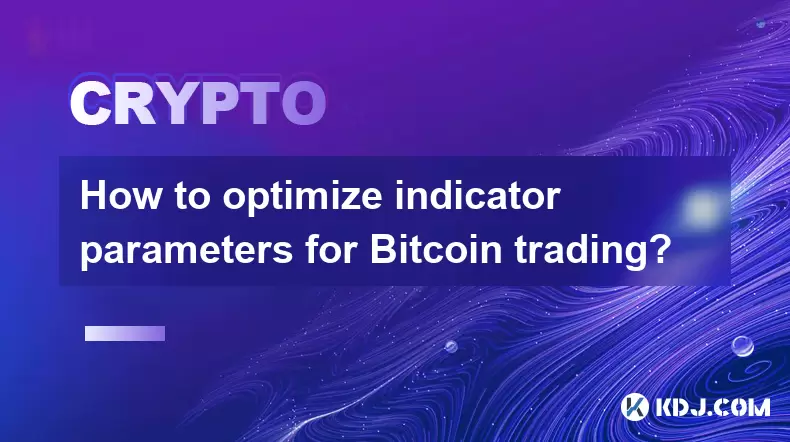-
 Bitcoin
Bitcoin $108,338.0981
-0.13% -
 Ethereum
Ethereum $2,566.4077
1.16% -
 Tether USDt
Tether USDt $1.0001
-0.01% -
 XRP
XRP $2.2841
-2.59% -
 BNB
BNB $658.5241
-0.17% -
 Solana
Solana $150.3819
-1.08% -
 USDC
USDC $0.9999
-0.01% -
 TRON
TRON $0.2864
-0.24% -
 Dogecoin
Dogecoin $0.1694
0.24% -
 Cardano
Cardano $0.5813
-0.72% -
 Hyperliquid
Hyperliquid $37.8292
-4.60% -
 Bitcoin Cash
Bitcoin Cash $503.3593
1.69% -
 Sui
Sui $2.8784
-0.69% -
 Chainlink
Chainlink $13.4784
-0.43% -
 UNUS SED LEO
UNUS SED LEO $9.0793
-0.27% -
 Stellar
Stellar $0.2537
-0.41% -
 Avalanche
Avalanche $18.0047
-0.23% -
 Shiba Inu
Shiba Inu $0.0...01181
1.56% -
 Hedera
Hedera $0.1608
0.49% -
 Toncoin
Toncoin $2.7568
-0.93% -
 Litecoin
Litecoin $86.4121
-0.20% -
 Monero
Monero $313.7273
-0.86% -
 Polkadot
Polkadot $3.3715
-0.66% -
 Dai
Dai $1.0001
0.01% -
 Ethena USDe
Ethena USDe $1.0004
0.03% -
 Bitget Token
Bitget Token $4.2902
-0.54% -
 Uniswap
Uniswap $7.5361
2.73% -
 Aave
Aave $285.6090
-0.55% -
 Pepe
Pepe $0.0...09958
0.28% -
 Pi
Pi $0.4560
-0.65%
How to optimize indicator parameters for Bitcoin trading?
2025/07/09 06:35

Understanding the Role of Indicators in Bitcoin Trading
In the world of Bitcoin trading, technical indicators play a pivotal role in decision-making. Traders use these tools to analyze price movements, identify trends, and predict potential reversals. However, default indicator settings often fail to reflect the unique volatility and behavior of Bitcoin. This necessitates optimizing indicator parameters to better align with market conditions and individual trading strategies.
Each indicator—whether it’s RSI, MACD, Bollinger Bands, or Moving Averages—comes with default values that are generally based on broad market assumptions. For example, the standard RSI period is 14, but for Bitcoin’s high volatility, this may not be optimal. Adjusting these settings can help traders filter out false signals and improve entry and exit timing.
Selecting the Right Indicators for Bitcoin
Before adjusting parameters, it's crucial to choose the right set of indicators that suit your trading style and strategy. Day traders might prefer fast-reacting indicators like Stochastic RSI, while swing traders could rely more on Moving Average Convergence Divergence (MACD) or Ichimoku Cloud.
The goal is not to overload charts with multiple indicators but to find a combination that works cohesively. For instance, combining RSI with Exponential Moving Averages (EMA) can provide both momentum and trend direction insights. Once you’ve selected your preferred tools, the next step is fine-tuning their parameters to fit Bitcoin’s unique characteristics.
Backtesting Indicator Settings Against Historical Data
One of the most effective ways to optimize indicator settings is through backtesting. This involves applying different parameter values to historical Bitcoin price data and evaluating how well they would have performed.
For example, if you're testing RSI sensitivity, try using periods like 7, 10, or 21 instead of the default 14. Observe how each setting reacts during high volatility phases, such as during halving events or macroeconomic shocks. Use platforms like TradingView or MetaTrader to automate backtests and compare results visually.
Key metrics to monitor include:
- Number of false signals
- Win rate of trades
- Risk-reward ratio
- Drawdown levels
By analyzing these, you can identify which parameter adjustments yield the best performance under various market conditions.
Adapting Parameters Based on Market Conditions
Bitcoin markets are highly dynamic, shifting between trending, ranging, and volatile states. Therefore, static indicator settings may not always be effective. Traders should consider adaptive or dynamic parameters that change according to current market behavior.
For instance, when Bitcoin enters a sideways consolidation phase, increasing the RSI period from 14 to 21 can reduce overbought/oversold noise. Conversely, during strong uptrends or downtrends, lowering the EMA period from 50 to 20 can make the moving average more responsive to price changes.
Some advanced traders even use volatility-based adjustments, where the length of the indicator varies depending on the asset’s volatility index (like the VIX for stocks). In crypto, similar logic can be applied using Bitcoin’s own volatility readings derived from historical price swings.
Incorporating Multiple Timeframes for Parameter Optimization
Optimizing indicators isn’t limited to a single timeframe. Smart traders often apply multi-timeframe analysis to enhance accuracy. For example, using a higher timeframe (like 4-hour or daily charts) to determine trend direction and a lower timeframe (such as 15-minute or 1-hour charts) for precise entries can help fine-tune indicator settings accordingly.
Suppose you're using Bollinger Bands. On a daily chart, you might set them to a 20-period SMA with 2 standard deviations. But on a 1-hour chart, reducing the period to 10 with 1.5 standard deviations might capture short-term breakouts more effectively.
This multi-layered approach ensures that your optimized indicators perform well across different time horizons, improving overall trade consistency and reliability.
Using Scripts and Custom Tools for Fine-Tuning
For those comfortable with coding, using Pine Script on TradingView or Python libraries like TA-Lib can allow for deeper customization of indicator parameters. These tools enable automated optimization, scanning for the best-performing settings over large datasets.
You can write a script that loops through different MACD signal line lengths or moving average types and plots performance heatmaps. This helps identify the most robust configurations without manual trial and error.
Additionally, some third-party platforms offer genetic algorithm optimization, where indicator parameters evolve based on performance criteria. While complex, this method can uncover non-intuitive combinations that significantly boost trading outcomes.
Frequently Asked Questions
Q: Can I use the same optimized parameters across all cryptocurrencies?
No, while Bitcoin may respond well to certain settings, other altcoins exhibit different volatility patterns and liquidity profiles. Each asset requires its own backtesting and adjustment process.
Q: How often should I re-optimize my indicator settings?
There’s no fixed schedule. Re-evaluation should occur after significant market shifts, such as major regulatory news or changes in Bitcoin’s correlation with traditional assets.
Q: Does optimizing indicators guarantee profitable trades?
No, indicator optimization improves probability, but it doesn't eliminate risk. Always combine it with sound risk management practices and continuous market observation.
Q: Is there a risk of overfitting when optimizing indicator parameters?
Yes, overfitting occurs when parameters are too closely tailored to past data, making them ineffective in live markets. To avoid this, test optimized settings on out-of-sample data before deploying them.
부인 성명:info@kdj.com
제공된 정보는 거래 조언이 아닙니다. kdj.com은 이 기사에 제공된 정보를 기반으로 이루어진 투자에 대해 어떠한 책임도 지지 않습니다. 암호화폐는 변동성이 매우 높으므로 철저한 조사 후 신중하게 투자하는 것이 좋습니다!
본 웹사이트에 사용된 내용이 귀하의 저작권을 침해한다고 판단되는 경우, 즉시 당사(info@kdj.com)로 연락주시면 즉시 삭제하도록 하겠습니다.
- Crypto Whale의 포트폴리오 : 디코딩 토큰은 숨겨져 있으며 새로운 트렌드
- 2025-07-09 08:30:12
- 희귀 동전, 행운의 발견, 귀중한 동전 : 일상적인 변화에서 보물을 발굴
- 2025-07-09 08:30:12
- HTX, WLFI 및 Stablecoins : 디지털 금융의 미래 탐색
- 2025-07-09 08:50:12
- Dogecoin은 $ 10까지? 급격한 잠재력과 10 달러 목표를 분석합니다
- 2025-07-09 08:50:12
- Blockdag는 스포츠 거래로 큰 점수를 얻고 Toncoin Price는 높은 것을 목표로하고 Pepe는 꼬집음을 느낍니다.
- 2025-07-09 07:10:12
- 비트 코인, 폭스 비즈니스 및 부족 : 와일드 웨스트 골드 러쉬?
- 2025-07-09 06:50:12
관련 지식

How to identify a volatility contraction pattern on Bitcoin using indicators?
2025-07-07 07:28:27
<h3>What is a Volatility Contraction Pattern in Bitcoin Trading?</h3><p>A volatility contraction pattern refers to a phase where the...

Do indicators work better on a logarithmic or linear scale for Bitcoin's long-term chart?
2025-07-08 13:42:39
<h3>Understanding Chart Scales in Cryptocurrency Trading</h3><p>In cryptocurrency trading, particularly for analyzing Bitcoin's long...

What is the Woodies CCI indicator and can it be used for Bitcoin?
2025-07-04 17:14:44
<h3>Understanding the Woodies CCI Indicator</h3><p>The Woodies CCI indicator is a variation of the traditional Commodity Channel Ind...

How to use indicators to trade the opening range breakout for Bitcoin CME futures?
2025-07-05 19:35:41
<h3>What Is the Opening Range Breakout Strategy?</h3><p>The opening range breakout (ORB) strategy is a popular trading technique use...

How to use the Relative Vigor Index (RVI) for Bitcoin trading?
2025-07-07 14:00:30
<h3>Understanding the Relative Vigor Index (RVI)</h3><p>The Relative Vigor Index (RVI) is a technical analysis tool used to assess t...

What does a bearish cross on the Stochastic RSI mean for Bitcoin?
2025-07-05 19:18:14
<h3>Understanding the Stochastic RSI Indicator</h3><p>The Stochastic RSI (Relative Strength Index) is a momentum oscillator used in ...

How to identify a volatility contraction pattern on Bitcoin using indicators?
2025-07-07 07:28:27
<h3>What is a Volatility Contraction Pattern in Bitcoin Trading?</h3><p>A volatility contraction pattern refers to a phase where the...

Do indicators work better on a logarithmic or linear scale for Bitcoin's long-term chart?
2025-07-08 13:42:39
<h3>Understanding Chart Scales in Cryptocurrency Trading</h3><p>In cryptocurrency trading, particularly for analyzing Bitcoin's long...

What is the Woodies CCI indicator and can it be used for Bitcoin?
2025-07-04 17:14:44
<h3>Understanding the Woodies CCI Indicator</h3><p>The Woodies CCI indicator is a variation of the traditional Commodity Channel Ind...

How to use indicators to trade the opening range breakout for Bitcoin CME futures?
2025-07-05 19:35:41
<h3>What Is the Opening Range Breakout Strategy?</h3><p>The opening range breakout (ORB) strategy is a popular trading technique use...

How to use the Relative Vigor Index (RVI) for Bitcoin trading?
2025-07-07 14:00:30
<h3>Understanding the Relative Vigor Index (RVI)</h3><p>The Relative Vigor Index (RVI) is a technical analysis tool used to assess t...

What does a bearish cross on the Stochastic RSI mean for Bitcoin?
2025-07-05 19:18:14
<h3>Understanding the Stochastic RSI Indicator</h3><p>The Stochastic RSI (Relative Strength Index) is a momentum oscillator used in ...
모든 기사 보기

























































































